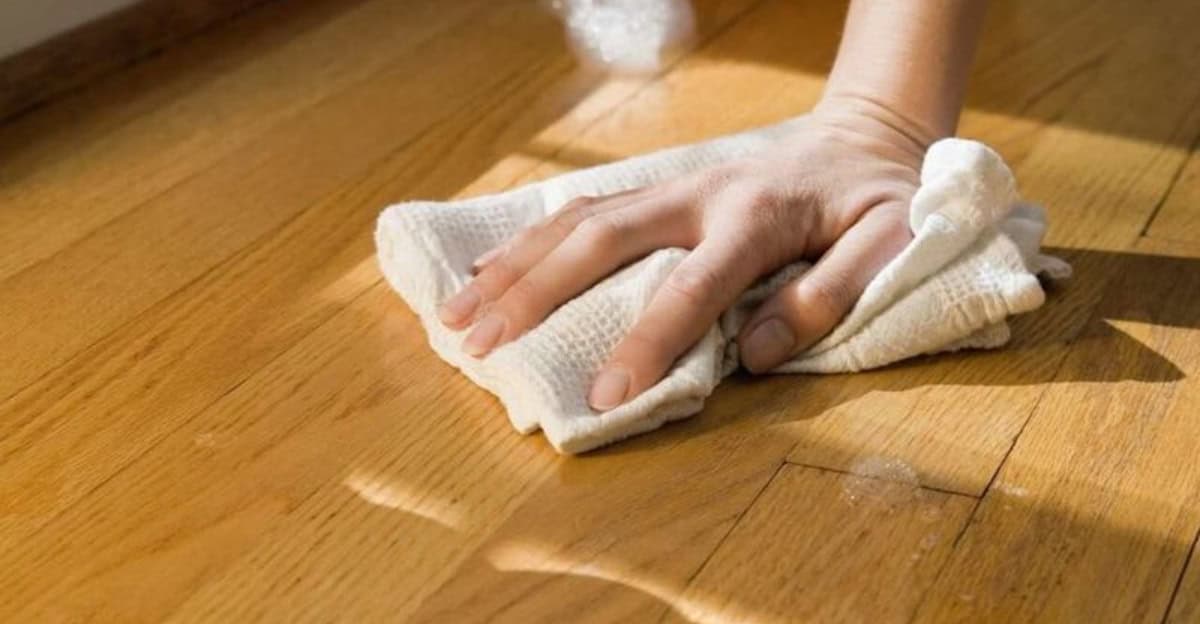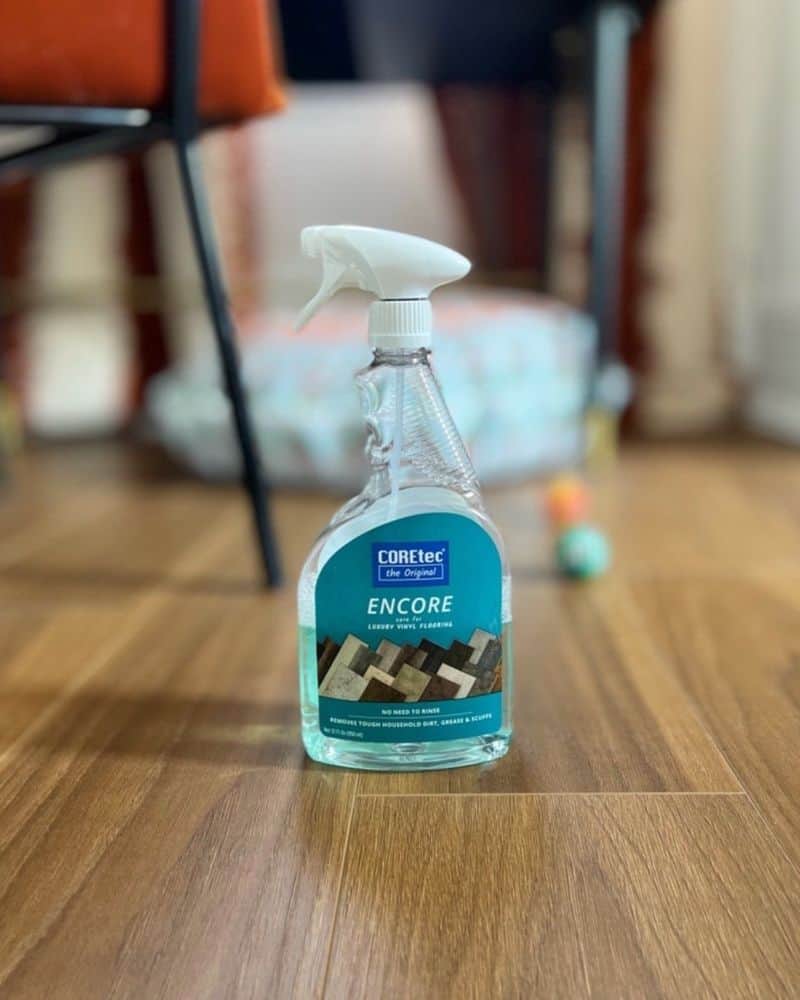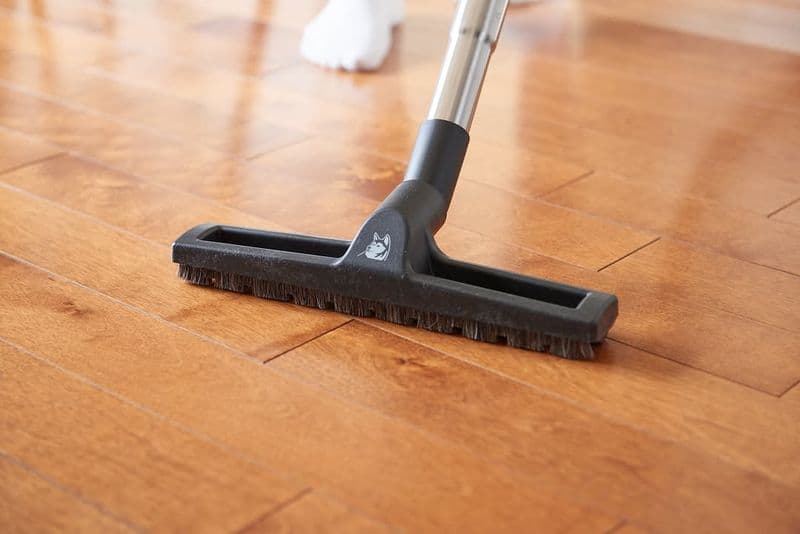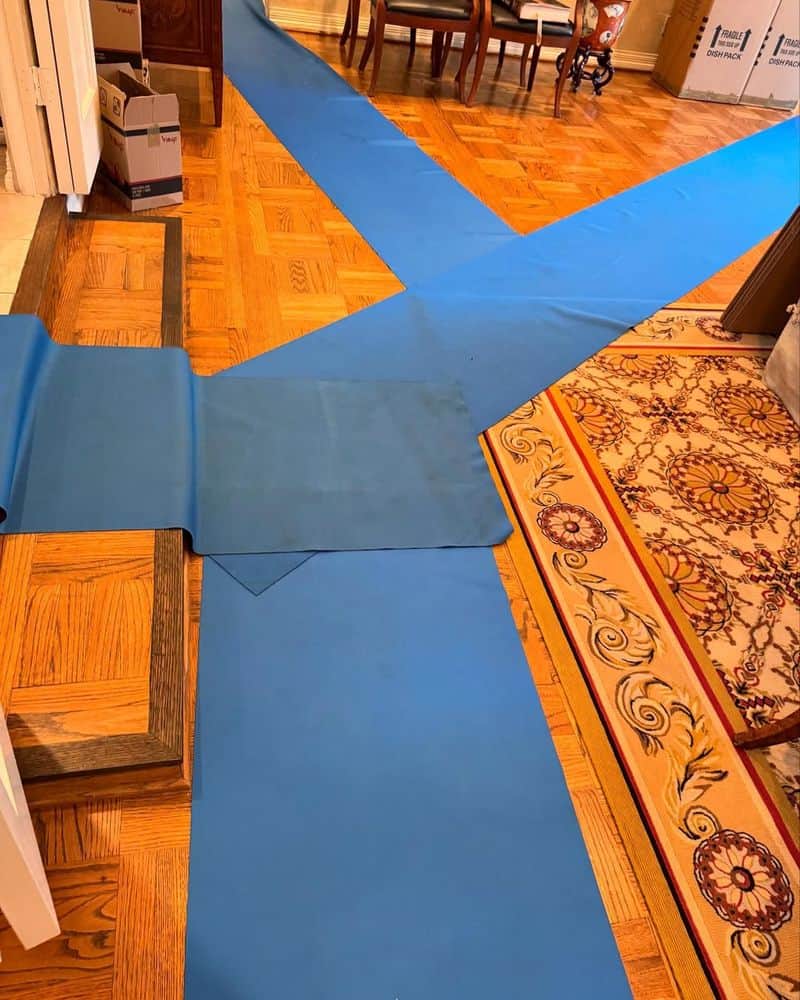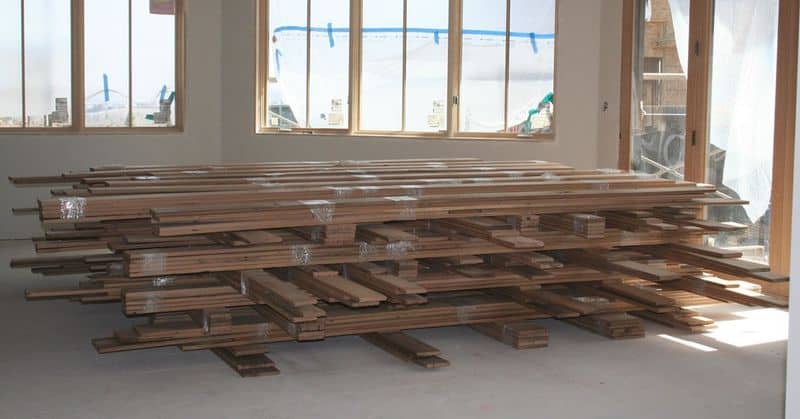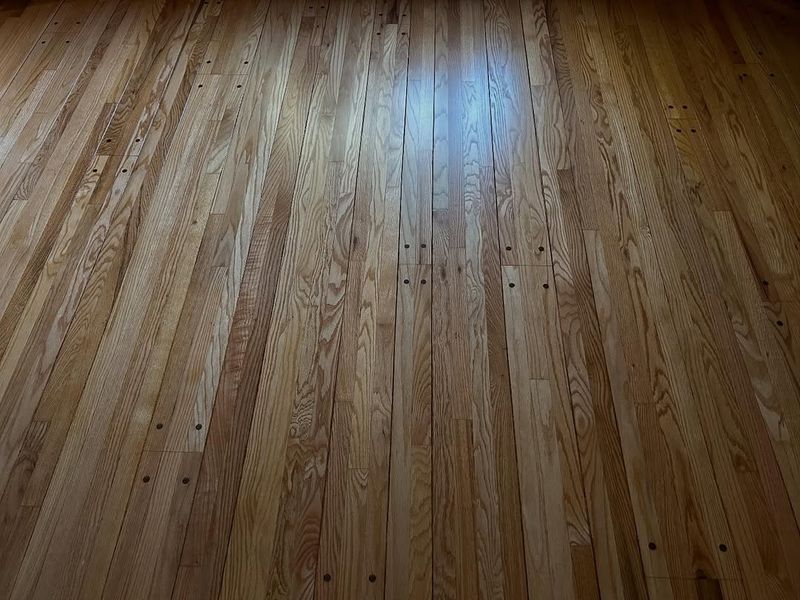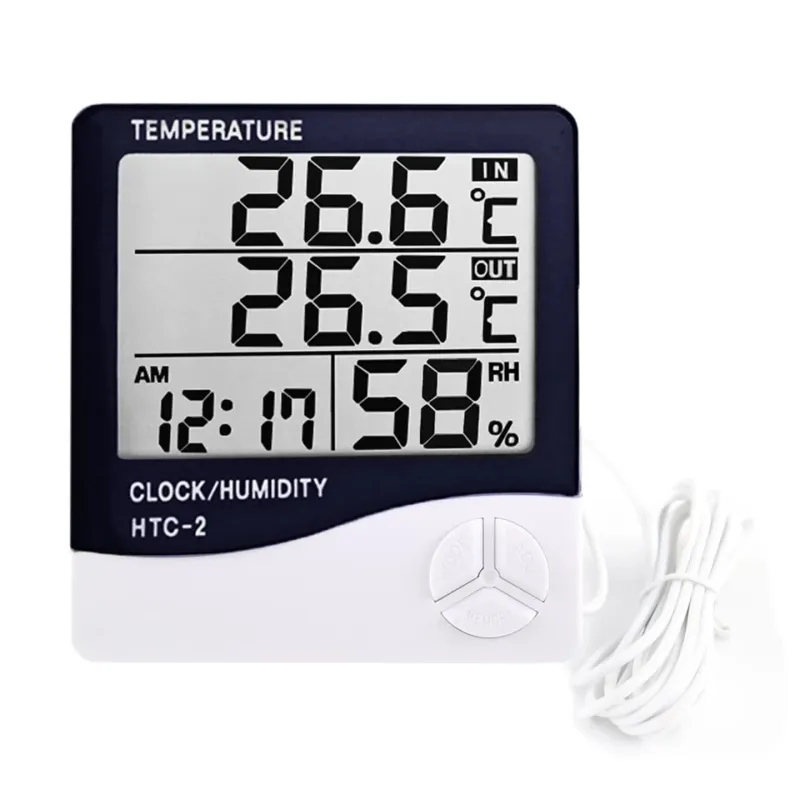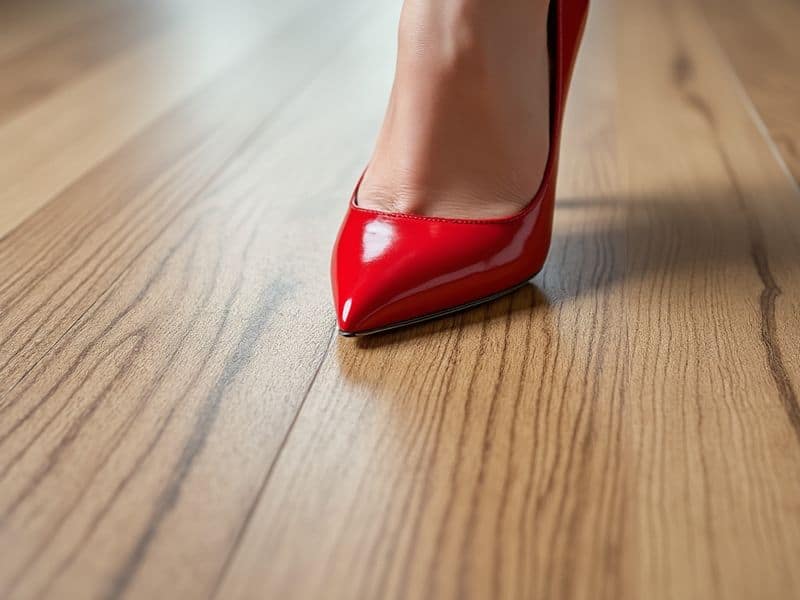Wood floors add a touch of elegance and warmth to any home, but maintaining them can be tricky. Many homeowners unknowingly commit common mistakes that can damage their floors.
In this article, we’ll explore 10 frequent blunders and how you can avoid them to keep your floors looking beautiful and lasting longer.
1. Cleaning with Vinegar or Harsh Chemicals
Vinegar might be the elixir for many cleaning woes, but not for wood floors. It’s like giving wood a sour lemonade bath—acidic and damaging.
Such harsh cleaning agents strip the protective finish from your floors, leaving them vulnerable.
Instead, opt for pH-neutral cleaners specifically designed for hardwood. These products clean without harming the surface. Imagine a gentle breeze that refreshes without eroding.
Your wood floors deserve care that matches their beauty. Keep vinegar for your salads, not your floors.
2. Skipping Dry Cleaning Before Mopping
Ever mopped a floor only to find it dirtier? Skipping dry cleaning is often the culprit. Sweeping or vacuuming before mopping removes grit and dust, preventing those unsightly mud streaks.
Think of it as clearing the stage before a performance. The spotlight is on your floor, not the dust bunnies hiding in the corners.
Use a soft-bristle attachment for vacuuming to protect the wood’s delicate surface. By making dry cleaning a habit, you’ll keep your floors show-ready every day.
3. Dragging Furniture Without Protection
Furniture legs are like stilettos on a dance floor—they can make or break the night. Dragging furniture across wood floors is a sure way to leave a mark, literally.
To protect your floors, attach felt pads to the bottoms of furniture legs. These small pads act as soft shoes, easing the furniture’s glide without scratching.
Whenever possible, lift furniture instead of dragging it. Your floor will thank you with fewer scars and more shine. Protecting wood floors is about anticipating the small dangers, and this is an easy fix.
4. Using Excessive Water When Cleaning
Water is the nemesis of wood floors, yet many people treat them like kitchen tiles. A soggy mop might seem like a good idea, but it invites disaster.
Imagine a sponge soaking up water and swelling—your wood floor feels the same way. Use a damp microfiber mop instead.
Keep it slightly moist to the touch, not dripping. After mopping, dry the surface immediately with a clean cloth. This way, your wooden planks will stay gleaming and happy, not waterlogged.
Avoid letting water sit, which could lead to warping or staining, a wood floor’s worst nightmare.
5. Neglecting to Acclimate New Wood Flooring
Imagine wearing a heavy coat in summer—a shock to the system! Installing wood without acclimation is similar. Wood needs time to adjust to its new environment’s humidity and temperature.
Allow planks to sit in the installation area for 48–72 hours before laying them. This acclimation period ensures the wood won’t expand or contract unexpectedly once installed.
This simple patience prevents future headaches, like gaps or uneven surfaces, keeping your floors flawless. Just like a thoughtful introduction, proper acclimation sets the stage for a harmonious result.
6. Ignoring Subfloor Conditions
The subfloor is like an orchestra’s conductor—integral yet unseen. If neglected, your beautiful wood floor can turn into a cacophony of creaks and unevenness.
Before installation, ensure the subfloor is clean, dry, and level. These conditions provide a stable foundation and prevent future issues, such as warping or noise.
It’s a hidden hero in the quest for perfect floors. Just like tuning an instrument allows for beautiful music, preparing the subfloor ensures harmony in your home.
7. Not Controlling Indoor Humidity
Humidity can be the silent saboteur of wood floors. Too much or too little can lead to expansion or contraction, causing gaps or cupping. It’s a delicate dance that demands balance.
Maintain indoor humidity between 30–50% using humidifiers or dehumidifiers as needed. This creates a comfortable environment not just for your floors, but for you too.
Consider it a climate control for your wood’s well-being. With the right humidity, your floors will lay flat and stay beautiful, no matter the weather outside.
8. Allowing Direct Sunlight to Fade Floors
Sunlight is both a friend and foe to wood floors. While it brightens your home, it can also fade the finish over time, leaving a patchwork of light and dark.
Use curtains, blinds, or UV-protective films to minimize direct exposure. This shields your floors from the sun’s relentless embrace, preserving their original hue.
Think of it as a sunscreen for your floors, keeping them vibrant and youthful. By managing sunlight, you ensure your wood remains as timeless as when first installed.
9. Using the Wrong Vacuum Attachments
Vacuuming wood floors can feel like a battle between cleanliness and caution. The wrong attachment can scratch or dull the surface, making it crucial to choose wisely.
Opt for soft-bristle brushes designed for hardwood floors. These attachments sweep away dust while being gentle on the finish.
It’s akin to using the right tool for a masterpiece painting—ensuring every stroke is flawless. By selecting the appropriate vacuum tools, you safeguard your floors’ elegance and longevity, one sweep at a time.
10. Wearing High Heels or Hard-Soled Shoes Indoors
High heels and hard-soled shoes are the nemeses of wood floors. Each step can leave dents, much like a pebble on a soft clay path.
Implement a no-shoes policy indoors or provide soft-soled slippers for guests. This small change can significantly extend the life of your floors.
Consider it a house rule with fashionable flair. Your wood floors will appreciate the break from constant pressure, maintaining their pristine condition for years to come.

